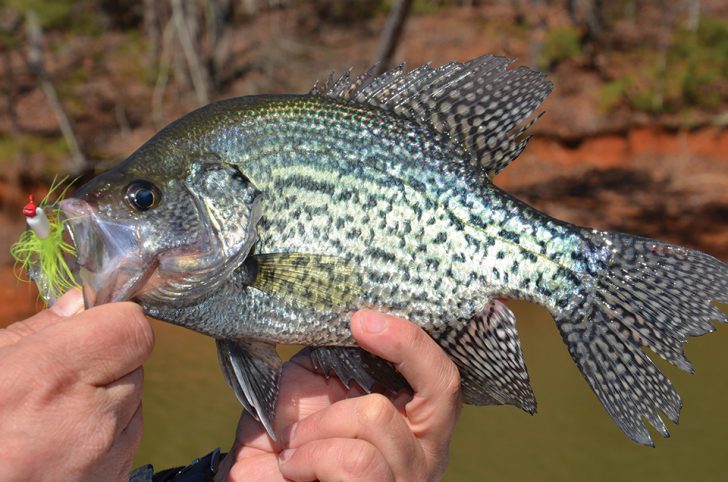
But the thing with crappie is you’re either catching them or you’re not. With that in mind, veteran crappie angler Dan Saknini offered some tips to consistently catch slab crappie.
1) Know The Cycles: The comfort zone for crappie is 35 feet and shallower, said Saknini. They hold on deep brush during the coldest and hottest times of year, but in milder weather they move shallower in search of optimal water temperatures.
“This time of year, the crappie are fattening up for the spawn,” he said. “Their comfort zone for the spawn is when water temperatures rise into the mid-50s, preferably closer to 60.”
As the spawn begins, fish stage up on structure. Then they’ll move extremely shallow in waves to seek out spawning areas on the banks and backs of creeks. The females move in, lay eggs and move back out. The males stay shallow to guard the beds.
Through the stages of the spawn, Saknini targets brush in 15 feet or shallower. With the spawning season lasting about a month, these could be pre-spawn fish or post-spawn fish that have moved back out.
Saknini shoots jigs in and around docks in the 10- to 15-foot range. Many lake homeowners discard Christmas trees off their docks. These are the docks you need to find.
2) Locate Structure: Regardless of the season, black crappie school up on some type of structure. They change depths, and move off structure momentarily to feed, so catching them consistently means knowing the locations of brushpiles at all different depths.
Saknini said good electronics and prospecting are key to being a good crappie angler. If you fish a lake that allows it, you can build your own honey holes.
“I probably sink 50 or 60 brushpiles a year,” Saknini said. “Then I go back and fish them. There might be fish there, or there might not, but I always have another one to go to.”
3) Ditch the Minnows: Fishing a minnow under a bobber is traditional, and it can be effective. However, Saknini said fishing jigs is a far more efficient.
“Once you get used to jig fishing, it’s always more productive,” he said. “If you’re fishing a minnow, it’s either under a bobber or on a downline, and it’s stationary. With a jig, you’re moving and covering water.”
Crappie are lazy and won’t chase a bait more than a few feet, Saknini said. There could be fish all over a piece of structure, but you wouldn’t know it if your minnow is just a foot out of the strike zone. With a jig, you can cover water vertically and horizontally for a better chance of passing through that zone.
Dan Saknini is a member of Lanier Crappie Anglers Club. Check them out at www.laniercrappieanglers.net.

